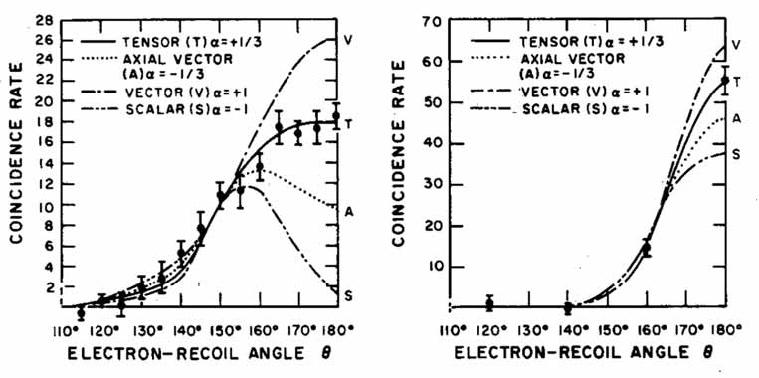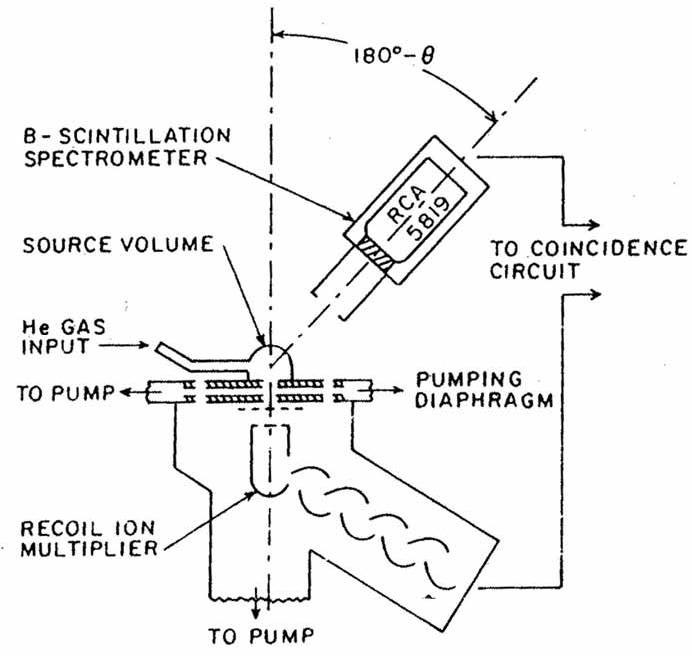What we learn from Franklin's Inevitability paper
We pick up with the Amtrak San Joaquin pulling north out of Fresno and me struggling to absorb the dense information in Allan Franklin's paper "Are the Laws of Physics Inevitable?" Fortunately Franklin avoids heavy mathematics in the paper and I am able to follow most of it—at least for a while. As he mentions names and concepts, I flip to Wikipedia in my iPad browser for quick refreshers. So here is the thread of Franklin's narrative with some added historical context.
Beta decay had been known and studied since Becquerel had discovered radioactivity in uranium in 1896. In 1934, still in Rome before emigrating to America, Fermi theorized that beta decay occurs when an atomic nucleus transitions from one element to another while simultaneously releasing a combination of electrons and neutrinos (or their antiparticles) as beta radiation. Others picked up on the idea and sought to improve on it. One group in particular modified the mathematics in order to better fit the existing experimental data. Their work met with wide acceptance but was later shown to be wrong. That's the first of Franklin's comedy of errors.
Another pair of famous names, George Gamow and Edward Teller, are next in the story, freshly emigrated to George Washington University from Russia and Hungary. They offer a more generalized version of the equations that allow for spin and angular momentum in the particle interactions. The mathematics to account these quantities becomes rather abstract, resulting in a set of five "couplings"—vector, scalar, tensor, axial vector and pseudoscalar—that can applied in combinations to describe nuclear interactions. The debate for the next dozen years or so becomes which combination of those couplings best describes the beta decay interaction.
For this first time through the material, I am going to keep it really simple and tell you that the scientific consensus by the end of the decade was that the correct solution must be some combination of scalar, tensor and pseudoscalar (S, T, P) or a combination of vector and axial vector (V, A). Meanwhile, a new experimental technique had been developed by various groups that allowed for measurement of nuclear spin and momentum. Such angular correlation experiments were designed to "calculate the angle between the direction of emission of the decay electron and that of the emitted neutrino," summarizes Franklin.
One of the researchers best known for experimental work on beta decay was the aforementioned C.S. Wu, who had come to the U.S. in 1936, studied under E.O. Lawrence at Berkeley, worked on uranium separation for the Manhattan Project, and was now a lecturer in the high-powered physics department at Columbia University, where Stan returned in 1946 to resume his war-interrupted studies.
In 1952, Stan and collaborator Brice Rustad are working in Wu's lab at Brookhaven Labs when they design an apparatus for an angular correlation experiment on an isotope of radioactive helium. Helium gas produced in a reactor is pumped into a semicylindrical volume while two detectors count the emitted particles and direction of nuclear recoil. Thus they can calculate electron-recoil angle for each event and plot a graph of angle to coincidence rate.
Franklin's Fig. 7 shows two graphs Rustad and Ruby published in their February 1955 report in Physical Review, showing the data fit to the predicted tensor values. Franklin summarizes Rustad-Ruby's conclusion: "The theoretical curves predicted on the basis of the various forms of the β-decay interaction clearly show that the tensor (T) interaction is favored."
Here I find myself wondering how it is that this first-time publication by a fairly green postgraduate achieved such attention to begin with. By now I have figured out how to log in to the journal database of the American Physical Society and can see a list of all papers by S.L. Ruby, including a list of other papers that reference each of those papers. By navigating citations, you can get a pretty quick idea of how any historical paper impacted future work.
Rustad and Ruby published twice, first in a short report in February 1953 titled "Correlation between Electron and Recoil Nucleus in He6 Decay" and then in a full paper in February 1955 titled "Gamow-Teller Interaction in the Decay of He6." I see that the first has been cited 28 and the second 60 times, and that some of those citations are by names like Feynman, Goldhaber, Frauenfelder, Marshak, Wu—all names I am becoming familiar with.
So why does the experiment get such notice? Franklin doesn't say so here, but it must be because of its association with Madame Wu. Rustad had published with her previously, but this is Ruby's debut publication in the Physical Review. Also, Franklin implies that the result was easy to accept because it supported the prevailing theoretical supposition at the time.
Things changed in a hurry by the end of 1956. Research in particle interactions from cosmic radiation had identified a whole category of new middleweight particles, bigger than electrons but smaller than nucleons, called mesons—and there was a profusion of variants with names like pion, muon and others. It had turned out that mesons exhibited decay transitions very similar to radioactive beta decay, and theorists now sought to find a single explanation for both phenomena.
A particular puzzle for meson researchers at the time was whether two identified mesons, the so-called tau and theta, were two separate particles or two forms of the same particle. One way they seemed different was that they had opposite direction of spin and parity, referring to a long-held principle that spacial reflection (parity) is conserved in force interactions. It was said that nature does not prefer left- or right-handedness—you shouldn't be able to tell the difference if you are looking directly at an event or at it through a mirror.
Conservation of parity was well proven in electromagnetism and for the strong nuclear force. In 1956, two Chinese-American physicists, C.N. Yang from Princeton and T.D. Lee from Columbia, asked if it was possible that parity is not conserved in weak interactions? They examined the literature and found to their surprise that it had never been explicitly tested. They wrote a paper that pointed out the lack of proof and proposed several experiments that could settle the question.
At first, few theorists thought there could be anything to it. Richard Feynman bet $50 that parity would be upheld; Freeman Dyson remembers thinking, "This is interesting," but he didn't pay it anymore attention. Nor did many experimenters rush to do the test, except the redoubtable Madame Wu, Lee's Columbia colleague who cancels a long-planned visit to China to do the experiment as quickly as possible.
It is a complex apparatus that requires the cryogenic expertise of a lab at the National Bureau of Standards, where by December Wu and colleagues have demonstrated that beta electrons emitted from a single layer of aligned radioactive cobalt nuclei preferred a specific direction of emission relative to the nuclear spin. Thus, there was a preferred handedness. No, the law of conservation of parity does not hold in the case of beta decays.
This was big news and before it was announced a second group of Columbia physicists obtained an independent confirmation in a test of meson decays in a cyclotron. Columbia pulled out all the stops when it made the announcement of the two confirming experiments, getting a full page of coverage in the New York Times on Jan. 16, 1957. It was all anyone was talking about at the American Physical Society annual meeting a month later, and again at the important Rochester High-Energy Physics meeting in April. Yang and Lee walked off with the Nobel Prize in October, quite possibly the fastest recognition in Nobel history.
All of that is very exciting and you might expect Stan as a Columbia man to share in the good feelings. Except for one thing. To account for parity violation, Lee and Yang now proposed a new "two-component" theory of the neutrino that predicted a muon interaction that could not be S-T-P. It had to be V–A. Here's Franklin:
By the end of the summer of 1957 parity nonconservation had been conclusively demonstrated and there was strong experimental support for the two-component theory of the neutrino. That ... led to the conclusion that the weak interaction responsible for the decay of the muon had to be a doublet VA combination. Although most of the evidence for β decay was consistent with such a doublet VA interaction, Rustad and Ruby's angular-correlation experiment on He6 provided seeming conclusive evidence that the β-decay interaction was tensor (T).
In January 1958, Physical Review published papers by Sudarshan and Marshak and by Feynman and Gell-Mann independently proposing a Universal Fermi Interaction with a combination of vector and axial vector (V–A) terms. Both papers directly cited the Rustad-Ruby paper as contradictory evidence that needed to be reconfirmed. Feynman and Gell-Mann went further and said the experiment was likely "wrong."
Franklin's next section is called "The Removal of Experimental Anomalies," and Rustad-Ruby is exhibit one. None other than C.S. Wu, with Arthur Schwarzchild, another Columbia physicist, undertake a "critical review" of the Rustad-Ruby experiment.
Franklin writes that Wu and Schwarzschild raised several questions concerning the apparatus design—a possible variation in the size of the source volume and not considering the effects of the angle of detection—that might have led to an incorrect result. They built a ten-times larger scale model of the apparatus to test the suggestion that the source volume of gas was effectively enlarged by the pressure of gas in the chimney below it. To get the picture, here is the original schematic from the 1953 paper.
Adding together the several corrections that Wu and Schwarzchild calculated to account for artifacts of the apparatus design led them to an overall corrected result that is "more in favor of axial vector (A) than tensor (T), contradictory to the original conclusion."
Franklin next adds:
Their [Wu and Schwarzchild's] work cast doubt on Rustad and Ruby's original conclusion, and in a postdeadline paper that Rustad and Ruby presented at a meeting of the American Physical Society in January 1958, they agreed with that assessment.*
The asterisk leads to a further comment that "There are no abstracts of postdeadline papers. Ruby remembers, however, that the tone of their paper was mea culpa; private communication, 1989."
I also check Franklin's citation for the Wu-Schwarzchild information and see that it was published in an internal Columbia University Report, April 1958 titled "A Critical Examination of the He6 Recoil Experiment of Rustad and Ruby." (It will sure be interesting to read that full report, I think to myself.)
Finally, Franklin wraps up the section by reporting that one other group at the University of Illinois redid the He6 experiment and concluded that the axial-vector interaction is dominant in beta decay. "One of the experimental anomalies for the V–A theory had been removed," writes Franklin. One more for his comedy of errors.
Whew, this post has gone on way too long. There is still much to come, but for now we end with the train heading through the Sacramento Delta and Allan Franklin restating his inevitability thesis.
The history of the development and articulation of the theory of β decay from its inception in 1934 to the proposal and acceptance of the V–A theory in the late 1950s is an example of what I mean by the inevitability of the laws of physics.... This was not a history of an unbroken string of successes.... Physicists can overcome errors.
Would it have been possible for some physicist or physicists to propose an alternative explanation of β decay? Logically, of course, the answer is yes. But, as we have seen, theoretical principles and calculations and experimental results—Nature—introduced constraints, so that the development of the V–A theory of the weak interaction seems to have been almost inevitable.



